Puls Dimension DIMENSION PISA11.CLASS2 Handleiding
Puls Dimension
Niet gecategoriseerd
DIMENSION PISA11.CLASS2
Bekijk gratis de handleiding van Puls Dimension DIMENSION PISA11.CLASS2 (5 pagina’s), behorend tot de categorie Niet gecategoriseerd. Deze gids werd als nuttig beoordeeld door 63 mensen en kreeg gemiddeld 5.0 sterren uit 32 reviews. Heb je een vraag over Puls Dimension DIMENSION PISA11.CLASS2 of wil je andere gebruikers van dit product iets vragen? Stel een vraag
Pagina 1/5

EN PISA11.CLASS2 Instruction Manual 24V Protection Module
PISA11.CLASS2
DE PISA11.CLASS2 Bedienungsanleitung 24V Sicherungsmodul
Read this first!
Before operating this unit please read the manual thoroughly and retain it for future reference! This
device may only be installed and put into operation by qualified personnel. If damage or malfunction
should occur during operation, immediately turn power off and send unit to the factory for inspection.
The unit does not contain serviceable parts.
The information presented in this document is believed to be accurate and reliable and may change
without notice. For any clarifications the English translation will be used.
Intended Use: This device is designed for installation in an enclosure and is intended for general
use such as in industrial control, office, communication, and instrumentation equipment. Do not use
this device in equipment, where malfunction may cause severe personal injury or threaten human
life.
Vor Inbetriebnahme lesen!
Bitte lesen Sie diese Warnungen und Hinweise sorgfältig durch, bevor Sie das Gerät in Betrieb
nehmen. Bewahren Sie die Anleitung zum Nachlesen auf. Das Gerät darf nur durch
fachkundiges und qualifiziertes Personal installiert werden. Bei Funktionsstörungen oder
Beschädigungen schalten Sie sofort die Versorgungsspannung ab und senden das Gerät zur
Überprüfung ins Werk. Das Gerät beinhaltet keine Servicebauteile.
Die angegebenen Daten dienen allein der Produktbeschreibung und sind nicht als zugesicherte
Eigenschaften im Rechtssinne aufzufassen. Im Zweifelsfall gilt der englische Text.
Bestimmungsgemäßer Gebrauch: Diese Gerät ist für den Einbau in ein Gehäuse konzipiert
und zur Verwendung für allgemeine elektronische Geräte, wie z.B. Industriesteuerungen,
Bürogeräte, Kommunikationsgeräte oder Messgeräte geeignet. Benutzen Sie dieses Gerät nicht
in Steuerungsanlagen, in denen eine Funktionsstörung zu schweren Verletzungen führen oder
Lebensgefahr bedeuten kann.
WARNING
WARNUNG
Risk of electrical shock, fire, personal injury or death.
1) Turn power off before working on the device. Protect against inadvertent re-powering.
2) Make sure that the wiring is correct by following all local and national codes.
4) Do not modify or repair the unit.
4) Do not open the unit.
5) Use caution to prevent any foreign objects from entering the housing.
6) Do not use in wet locations or in areas where moisture or condensation can be expected.
Missachtung nachfolgender Punkte kann einen elektrischen Schlag, Brände, schwere Unfälle
oder Tod zur Folge haben.
1) Schalten Sie die Eingangsspannung vor Installations-, Wartungs- oder Änderungsarbeiten ab
und sichern Sie diese gegen unbeabsichtigtes Wiedereinschalten.
2) Sorgen Sie für eine ordnungsgemäße und fachgerechte Verdrahtung.
3) Führen Sie keine Änderungen oder Reparaturversuche am Gerät durch.
4) Gerät niemals öffnen.
5) Verhindern Sie das Eindringen von Fremdkörpern, wie z.B. Büroklammern und Metallteilen.
6) Betreiben Sie das Gerät nicht in feuchter Umgebung oder in einer Umgebung, bei der mit
Betauung oder Kondensation zu rechnen ist.
Product Description
This protection module fulfills two basic functions. First it distributes the current of a large power
source to four NEC CLASS 2 output channels and therefore allows for a simpler wiring method and
easier approval process of the entire machine. The second function is to permit only so much
current on the outputs that the input voltage of this unit (which corresponds to the output voltage of
the power supply) does not fall below 21V. This ensures a reliable supply voltage for sensitive
equipments, such as PLCs, controls or sensors, when they are connected directly to the same
power supply as the PISA protection module.
The protection module has one 24V input and four output channels to which the current is
distributed. Each output channel is equipped with a redundant electronic over-current protection,
which avoids that wires will be overloaded. All four output channels shutdown simultaneously, if the
current of one individual channel or the maximum allowed current for the protection module is
exceeded.
A
safeguard circuit in the input stage of the PISA module works like a valve. It permits only so much
current that the input voltage does not drop below 21V. In case the input voltage would fall below
this value (e.g. due to overloads, too small of a power supply or high inrush currents such as from
starting a motor), all four output channels will be actively current limited and will shutdown after a
certain period of time.
A
typical wiring configuration is shown below. All sensitive loads are connected directly to the power
supply. If needed, these load circuits can be protected with standard circuit breakers or fuses. Loads
which are less sensitive to voltage dips or interruptions or which a
r
e the source of the voltage drop
themselves are connected to the output of the PISA protection module.
Gerätebeschreibung
Das PISA Sicherungsmodul erfüllt zwei grundlegende Aufgaben: Einerseits verteilt es den Strom
eines leistungsstarken Netzgerätes auf vier strombegrenzte NEC-CLASS-2 Ausgänge, reduziert
damit den Verkabelungsaufwand und ermöglicht einen einfacheren Zulassungsprozess der
gesamten Anlage oder Maschine. Andererseits lässt es nur soviel Strom am Ausgang zu, dass
die Eingangsspannung nicht unter 21V abfällt. Damit wird eine sichere und unterbrechungsfreie
Versorgung für empfindliche Verbraucher (wie z.B. Steuerungen und Sensoren) möglich, wenn
diese an die gleiche Stromversorgung wie das PISA Sicherungsmodul selbst angeschlossen
werden.
Das Sicherungsmodul hat einen 24V-Eingang und vier Ausgänge, auf die der Strom verteilt wird.
Jeder Ausgangskanal ist mit einer redundanten elektronischen Überstromschutzeinrichtung
ausgestattet, welche eine Überlastung von Ausgangsleitungen verhindert.
Wird ein zulässiger Kanalstrom oder der Gesamtstrom für das Sicherungsmodul überschritten,
begrenzt das Modul die Ausgangsströme und schaltet danach alle vier Ausgänge ab.
Ein Schutzschild in der Eingangsstufe des PISA Moduls arbeitet dabei wie ein regelbares Ventil
und lässt nur so viel Strom durch, dass die Versorgungsspannung nicht unter 21V absinkt. Ein
Unterschreiten dieser Schwelle könnte zum Beispiel wegen eines zu schwach ausgelegten
Netzgerätes, einer Überlast oder eines zu hohen Einschalt- oder Anlaufstromes auftreten.
In solchen Fällen werden alle Ausgänge für eine kurze Zeit aktiv strombegrenzt gefolgt von einer
A
bschaltung aller vier Ausgangskanäle.
In einer typischen Konfiguration, wie unten gezeichnet, werden die empfindlichen Verbraucher
möglichst direkt an die Stromversorgung angeschlossen. Bei Bedarf können hier Standard-
Leitungsschutzschalter zur Absicherung verwendet werden. Verbraucher, die unempfindlich auf
kurze Spannungsunterbrechungen reagieren oder selbst die Ursache für Einbrüche auf der 24V-
Versorgung sind, werden an den Ausgängen des Sicherungsmoduls angeschlossen.
Non NEC-CLASS 2 Load
DC 24V
Power
Supply
NEC CLASS 2 Circuit 2
NEC CLASS 2 Circuit 3
NEC CLASS 2 Circuit 4
NEC CLASS 2 Circuit 1A1
A2
A4
A3
PISA Protection Module
Safeguard
DC 24V
Netz-
gerät
NEC-CLASS-2 Stromkreis 2
NEC-CLASS-2 Stromkreis 3
NEC-CLASS-2 Stromkreis 4
NEC-CLASS-2 Stromkreis 1A1
A2
A4
A3
Kein NEC-CLASS-2 Stromkreis
PISA Sicherungsmodul
Schutzschild
Germany +49 89 9278 0 www.pulspower.de Headquarters:
PULS GmbH
Arabellastrasse 15
D-81925 Munich
Germany
www.pulspower.com
China +86 512 62881820 www.pulspower.cn
France +33 478 668 941 www.pulspower.fr
North America +1 630 587 9780 www.pulspower.us
Austria +43 27 64 32 13 www.pulspower.at
Singapore +65 6684 2310 www.pulspower.sg
Switzerland +41 56 450 18 10 www.pulspower.ch
United Kingdom +44 845 130 1080 www.pulspower.co.uk

PISA11.CLASS2 Instruction Manual
PISA11.CLASS2 Bedienungsanleitung
Technical Data 1) Technische Daten 1) PISA11.CLASS2
Rated Voltage Nennspannung nom. DC 24V
Input Voltage Range Eingangsspannungsbereich 18-30Vdc
Maximum Input Voltage
2) Maximale Eingangsspannung 2) max. 30Vdc
Input current Eingangsstrom nom. 15A
Required Input Voltage for Turning-on of
Outputs
Erforderliche Eingangsspannung zum
Einschalten der Ausgänge
typ. 21.4Vdc
Turn-on Delay of Outputs 14) Einschaltverzögerung der Ausgänge 14) typ. 270ms
Outputs meets NEC CLASS 2 Ausgänge erfüllen NEC-CLASS-2 Yes / Ja
Input Voltage Protection Level
3) Aktivierung der Eingangsschutzschaltung 3) min. / max. 21.0Vdc / 21.8Vdc
Output Current 7) Channel 1
Channel 2
Channel 3
Channel 4
Ausgangsstrom 7) Kanal 1
Kanal 2
Kanal 3
Kanal 4
nom.
nom.
nom.
nom.
3.7A at 24V, 3.2A at 28V
3.7A at 24V, 3.2A at 28V
3.7A at 24V, 3.2A at 28V
3.7A at 24V, 3.2A at 28V
Total Output Current (all 4 channels) Gesamter Ausgangsstrom (alle 4 Kanäle) nom. 14.8A at 24V, 12.8A at 28V
Output Current Limitation
12) Ausgangsstrombegrenzung
12) min. / max. 16.6A / 23.6A
Shutdown Times 13) at 2x rated current Abschaltzeiten 13) bei 2x Nennstrom typ. 1s at 7.4A
at short circuit bei Kurzschluss typ. 10ms
Voltage Drop between Input and Output
4) Spannungsabfall zwischen Ein- und Ausgang
4) typ. 92mV at 24V, 81mV at 28V
Stand-by Current Ruhestrom typ. 43mA
Power Losses in Stand-by Mode Verlustleistung im Leerlauf typ. 1.0W
Power Losses at typical Output Loads
4) Verlustleistung bei typ. Ausgangsströmen
4) typ. 1.6W
Max. Load Capacitors 5) per channel Max. Lastkapazität
5) pro Kanal typ. / min. 58mF / 14mF
four outputs in total alle 4 Ausgänge zusammen typ. / min. 58mF / 14mF
Max. Load Capacitors 6) per channel Lastkapazität pro Kanal
6) typ. / min. 68mF / 45mF
Degree of Pollution (non-conductive) Verschmutzungsgrad (nicht leitend) EN 50178 / 62103 2
Degree of Protection Schutzart EN 60529 IP20
Class of Protection Schutzklasse IEC 61140 III
Reverse Polarity Protection (Input) Verpolschutz am Eingang No / Nein
Return Voltage Resistance 9) Rückspeisefestigkeit 9) max. 30Vdc
Parallel Use of Outputs Parallelschaltung von Ausgängen No / Nein
Operational Temperature Range Betriebstemperaturbereich nom. -25°C - +70°C
Storage Temperature Range Lagertemperaturbereich nom. -40°C - +85°C
Humidity 10) Feuchte 10) IEC 60068-2-30 5 - 95% r.H.
Vibration Schwingen IEC 60068-2-6 2g
Shock Schocken IEC 60068-2-27 30g 6ms, 20g 11ms
Dimensions 11) (WxHxD) Abmessungen 11) (BxHxT) nom. 45 x 75 x 91mm
Weight Gewicht max. 120g, 0.26lb
Limited Warranty Gewährleistung Years / Jahre 3
1) All parameters are specified at 24Vdc, 25°C ambient temperature and after a 5 minutes run-in
time unless otherwise noted.
2) Absolute maximum continuous input voltage with no damage to the protection module.
3) Once the voltage tries to fall below this value, a protection circuit limits or shutdown the outputs in
order to maintain sufficient supply voltage. Voltage dips below this value can occur up to 200µs.
4) Typical value when all output channels are loaded with 50% of its nominal current.
5) Permissible capacitor, which can be connected to the outputs without shutdown of the protection
module. The listed values are valid for the entire temperature range.
Typical values are with an additional 1.9A resistive load per output
Minimum values are with an additional 3.7A constant current load per output
6) Permissible capacitor, which can be connected to one particular output when only this output is
loaded and all others are not. The listed values are valid for the entire temperature range.
Typical values are with an additional 1.9A resistive load
Minimum values are with an additional 3.7A constant current load
7) See also Fig. A
8) Not used
9) Loads such as decelerating motors and inductors can feed voltage back to the output of the PISA
module. The figure represents the maximum allowed feed-back voltage.
10) Do not energize while condensation is present.
11) Depth without DIN-rail and signal connector. Add 13mm in depth for the signal connector.
12) Provided that the supplying power source can deliver enough current. This current can be drawn
from each individual output for a short period of time.
13) The “timer” for shutdown starts immediately once the nominal current levels are exceeded. All
output channels will shutdown, if one channel is overloaded. See Fig. 5 for more values.
14) All outputs turn on at the same time.
1) Alle Werte gelten bei 24Vdc, 25°C Umgebungstemperatur und nach einer Aufwärmzeit von 5
Minuten, wenn nichts anderes angegeben ist.
2) Absolute Obergrenze, bei der das Sicherungsmodul noch nicht zerstört wird.
3) Unterhalb dieser Eingangsspannung wird die Schutzschaltung aktiviert (verzögert um 200µs),
um einen Einbruch der Versorgungsspannung zu vermeiden. Die Ausgangsströme werden
für eine bestimmte Zeit begrenzt und danach abgeschaltet.
4) Typischer Wert, wenn alle Ausgänge mit 50% des Nennstroms belastet werden.
5) Zulässige Gesamtkapazität, die an den vier Ausgängen zugeschaltet werden kann ohne
Abschaltung des Moduls. Die Werte gelten für den gesamten Temperaturbereich.
Die typischen Werte gelten mit einer zusätzlichen Widerstandslast von 1,9A pro Ausgang
Die Minimumwerte gelten mit einer zusätzlichen Konstantstromlast von 3,7A pro Ausgang.
6) Zulässige Kapazität, die an einem Ausgang zugeschaltet werden kann, wenn alle anderen
Ausgänge unbelastet sind. Die Werte gelten für den gesamten Temperaturbereich.
Die typischen Werte gelten mit einer zusätzlichen Widerstandslast von 1,9A.
Die Minimumwerte gelten mit einer zusätzlichen Konstantstromlast von 3,7A.
7) Siehe auch Bild A
8) frei
9) Bremsende Motoren oder Induktivitäten können Spannung zum Ausgang des PISA Moduls
rückspeisen. Der Wert gibt die maximal zulässige Rückspeisespannung an.
10) Nicht betreiben, solange das Gerät Kondensation aufweist.
11) Tiefe ohne DIN-Schiene und Signalstecker. Zusätzlich 13mm in der Tiefe für Signalstecker.
12) Vorausgesetzt, die speisende Stromversorgung kann genügend Strom liefern. Dieser Strom
kann kurzzeitig aus jedem einzelnen Ausgangskanal entnommen werden.
13) Der „Timer“ zur Abschaltung startet bei Überschreitung des Nennstroms. Bei Überlast an
einem Kanal werden alle Kanäle abgeschaltet. Siehe auch Bild 5 für weitere Werte.
14) Alle Ausgänge schalten gleichzeitig ein.
Fig. A / Bild A
Output current vs. supply voltage /
Ausgangsstrom in Abhängigkeit der Versorgungsspannung
Input Voltage
22V
0 1A 3A 4A
24V
25V
26V
30V
27V
28V
29V
2A
Output Current, typ
23V

PISA11.CLASS2 Instruction Manual
PISA11.CLASS2 Bedienungsanleitung
Installation
This protection module is suitable for DIN-rail mounting. Use DIN-rail according to EN 60715 or EN
50022 with a height of 7.5 or 15mm.
Keep the following installation clearances:
Top and bottom: min. 40mm on top, 20mm on the bottom
Left and right: min. 6.4mm if the ambient temperature is above 60°C.
The protection module can be used with any regulated 24Vdc power supply. If the power source can
deliver more than 40A continuous, the PISA module shall be equipped with an external input fuse
(e.g. 30/32A). The power capability and performance of the power supply can limit the output
characteristics of the PISA module.
Make sure that the input voltage polarity is correct before applying the input voltage.
Do not connect batteries to the outputs of the PISA module.
A
high voltage drop between the power supply and the protection module might cause a
malfunction. It is not recommended to use wires longer than 2x2m (for 2.5mm
2 wires or AWG 14) or
2x4m (for 4mm2 wires or AWG 12) to avoid undesired undervoltage conditions on the input of the
protection module.
Use an appropriate wire size on the input, which matches the ampacity of the power supply.
A
wiring scheme can be found in Fig. 2.
Use in hazardous location areas
Units which are marked with "Class I Div 2" are suitable for use in Class I Division 2 Groups A, B, C,
D locations.
Units which are marked with II 3G Ex nA nC IIC T4 Gc are suitable for use in Group II Category
3 (Zone 2) environments and are evaluated according to EN 60079-0:2009 and EN 60079-15:2010.
WARNING EXPLOSION HAZARDS!
Substitution of components may impair suitability for this environment. Do not disconnect the unit or
operate the reset button unless power has been switched off or the area is known to be non-
hazardous. The signal-connector may not be used in hazardous location areas unless additional
measures are met to avoid an unintended disconnection (e.g. an additional mechanical fixation).
The connection must meet the requirements of the EN 60079-15:2010. A suitable enclosure must be
provided for the end product which has a minimum protection of IP54 and fulfils the requirements of
the EN 60079-15:2010.
Installation
Das Gerät ist zur Montage auf DIN-Schienen entsprechend EN 60715 oder EN 50022 mit einer
Höhe von 7,5 oder 15mm geeignet und kann mit beliebigen geregelten 24Vdc
Stromversorgungen verwendet werden. Bei Stromversorgungen mit Dauerausgangsströmen
über 40A muss am Eingang eine externe Sicherung (z.B. 30/32A) vorgeschaltet werden. Die
Eigenschaften und Leistungsfähigkeit der Stromversorgung können die Ausgangsparameter des
PISA Moduls einschränken.
Folgende Mindestabstände sind bei der Installation einzuhalten:
Oben mindestens 40mm und unten mindestens 20mm
Links und rechts: min. 6.4mm bei Umgebungstemperaturen über 60°C.
A
uf korrekte Polarität der Eingangsspannung ist zu achten.
Keine Batterien direkt an den Ausgang der PISA Module anschließen.
Zu hohe Spannungsabfälle zwischen der Stromversorgung und dem Sicherungsmodul können
Fehlfunktionen verursachen. Wir empfehlen, keine Leitungen länger als 2x2m (bei 2.5mm
2
Querschnitt) oder 2x4m (bei 4mm
2), um das Sicherungsmodul mit ausreichend Spannung zu
versorgen.
Die Auslegung des Drahtquerschnitts der Eingangsleitung muss dem Amperewert der
Stromversorgung angepasst sein. Ein Anschlussdiagramm ist in Bild 2 gezeigt.
Betrieb in explosionsgefährdeter Umgebung
Geräte, die mit "Class I Div 2" gekennzeichnet sind, sind für den Einsatz in Klasse I Division 2
Gruppen A,B,C,D Umgebung geeignet.
Geräte, welche die Kennzeichnung II 3G Ex nA nC IIC T4 Gc tragen, sind nach EN 60079-
0:2009 und EN 60079-15:2010 getestet und können in einer Gruppe II, Kategorie 3 (Zone 2)
Umgebungen verwendet werden.
A
CHTUNG EXPLOSIONSGEFAHR!
Veränderungen am Gerät können die Tauglichkeit für diese Umgebung beeinträchtigen.
A
nschlüsse nicht abklemmen und Reset Taste nicht betätigen, solange Spannung anliegt oder
die Umgebung als explosionsgefährlich gilt. Der Signalstecker darf in Bereichen mit
gasexplosionsfähiger Atmosphäre nicht angeschlossen sein, außer es werden Maßnahmen
getroffen, die ein unbeabsichtigtes Trennen verhindern (zusätzliche mechanische Sicherung).
Das Gerät muss mindestens in ein IP54 Gehäuse, die den Anforderungen der EN60079-15:2010
entspricht, eingebaut werden. Die Anschlüsse müssen ebenfalls dieser Norm entsprechen.
Synchronization of Multiple PISA Modules (see Fig. 4)
If multiple PISA modules are used on the same power supply, it is recommended to connect the
sync. bus of all modules together. If one unit shuts down due to the protection function of the input
voltage protection circuit (safeguard), all other modules will shutdown too. This avoids a false
interpretation of which output channel caused the problem. If the sync. terminals are not linked, the
module with the highest safeguard protection voltage level (caused by tolerances) would shutdown
first regardless whether the failure was caused by this module or not.
Please note:
If the cause for the shutdown was an over-current of one individual channel, only this module will
shutdown and the other modules will stay on. In this case the sync. line has no impact on the other
modules.
Synchronisation mehrerer PISA Module (siehe Bild 4)
Wenn mehrere PISA Module von einer Stromversorgung versorgt werden, sollten die Sync.-
A
nschlüsse der einzelnen Module miteinander verbunden werden. Damit werden alle PISA
Module abgeschaltet, wenn bereits bei nur einem Modul die Eingangsschutzschaltung
angesprochen hat. Das vermeidet eine Fehlinterpretation bei der Ursachensuche. Sind die
Sync.- Anschlüsse der einzelnen PISA Module nicht miteinander verbunden, schaltet das PISA
Modul mit dem höchsten Spannungswert der Eingangsspannungsschutzschaltung (bedingt
durch unterschiedliche Toleranzen der einzelnen Module) als Erstes ab, unabhängig ob der
Verursacher an diesem Modul angeschlossen ist oder nicht.
Bitte beachten: Liegt der Grund einer Abschaltung bei der Überschreitung eines Kanalstroms,
schaltet nur das betroffene PISA Modul die Ausgänge ab. Weitere mit der Sync.-Leitung
verbundenen Module bleiben an.
Dielectric Strength (see Fig. 3)
The relay contact and the ON/OFF signal are floating and separated from the input and output
voltage. The creepage and clearance between the power port and the signal port is 1.3mm. The
following isolations test were performed:
A B C
Type Test (60s) 500Vac 500Vac 50Vac
Factory Test (5s) 500Vac 500Vac -
Field Test (5s) 500Vac 500Vac 50Vac
Cut-off current setting >1mA >1mA >1mA
Type and factory tests are conducted by the manufacturer. Field tests may be conducted in the field
using the appropriate test equipment which applies the voltage with a slow ramp (2s up and 2s
down). Connect all input and output terminals together as well as all signal poles before conducting
the tests. When testing, set the cut-off current settings to the value in the table above.
Isolationsfestigkeit (siehe Bild 3)
Der Relaiskontakt und der „ON/OFF“-Signaleingang haben keinen Bezug zur Eingangs- oder
A
usgangsspannung. Die Luft- und Kriechstrecken zwischen Leistungs- und Signalklemmen
betragen 1,3mm. Die folgenden Isolationstests wurden durchgeführt:
A B C
Typprüfung (60s) 500Vac 500Vac 50Vac
Stückprüfung (5s) 500Vac 500Vac -
Wiederholungsprüfung (5s) 500Vac 500Vac 50Vac
Strom-Abschaltschwelle >1mA >1mA >1mA
Typ- und Stückprüfungen werden beim Hersteller durchgeführt. Wiederholungsprüfungen dürfen
mittels geeigneten Prüfgenerators mit langsam (2s) ansteigenden und abfallenden
Spannungsrampen in der Anwendung erfolgen. Vor den Tests sind alle Eingangs und
A
usgangspole wie auch alle Signalkontakte miteinander zu verbinden. Während der Tests darf die
Strom-Abschaltschwelle nicht kleiner als der in der obigen Tabelle angegebene Wert sein.
Fig. 1 / Bild 1 Functional diagram / Funktionsschaltbild Fig. 2 / Bild 2 Wiring scheme / Verdrahtungsplan
Output
Current
Monitor
+ Output 1
Reset,
ON/OFF
Safeguard for
Minimum Input
Voltage
-
-
+
Failure
+ Output 2
Failure
+ Output 3
Failure
+ Output 4
Failure
I
Sense
I
Sense
I
Sense
I
Sense
Current
Limiter &
Shut-down
Manager
Input
Status
12
11
13
14
Outputs-
OK
Contact
Input
Reset,
ON/OFF
Reset,
ON/OFF
(+)
(-)
Output
OK
Synchro-
nization
15
16
Sync.
I
Sense
Redundant
Emergency
Switch
NEC-CLASS-2
Controller
24V
Power
Supply
PLC, Controls
(sensitive loads)
-
-
+
+
+
-
PISA
Protection Module
I/P
O/P 1
+
-
-
O/P 2
O/P 3
O/P 4
Recommended
wire length:
4mm²: max. 2x4m
2.5mm²: max.2x2m
Load
4
+
-
Load
3
+
-
Load
2
+
-
Load
1
+
-
Distribution
Node
Fig. 3 / Bild 3 Isolation Fig. 4 / Bild 4 Using multiple PISA modules in parallel / PISA Module im Parallelbetrieb
A
C
B
Output-ok
Contact
Reset, ON/OFF
Signal Input
Input +, -
Output
(1 - 4)
Sync.
(15,16)
13
14
-
+
12
11
1 2 3 4
Outputs
Input
+
- -
sync.
16
15
14
13
12
11 Reset
+
-
OK
PISA11
Input
L1 L2 L3 PE
QT40.241
Power
Supply
Output
+
-
1 2 3 4
Outputs
Input
+
- -
sync.
16
15
14
13
12
11 Reset
+
-
OK
PISA11
1 2 3 4
Outputs
Input
+
- -
sync.
16
15
14
13
12
11 Reset
+
-
OK
PISA11
1 2 3 4
Outputs
Input
+
- -
sync.
16
15
14
13
12
11 Reset
+
-
OK
PISA11
Product specificaties
| Merk: | Puls Dimension |
| Categorie: | Niet gecategoriseerd |
| Model: | DIMENSION PISA11.CLASS2 |
Heb je hulp nodig?
Als je hulp nodig hebt met Puls Dimension DIMENSION PISA11.CLASS2 stel dan hieronder een vraag en andere gebruikers zullen je antwoorden
Handleiding Niet gecategoriseerd Puls Dimension

31 Juli 2024

30 Juli 2024

30 Juli 2024

30 Juli 2024

30 Juli 2024

29 Juli 2024

29 Juli 2024

29 Juli 2024

29 Juli 2024

5 Juli 2023
Handleiding Niet gecategoriseerd
- Skymaster
- Davis
- Lascar Electronics
- 9.solutions
- Tracer
- Ambiano
- Mio
- Boso
- Joolz
- Elkay
- Socomec
- Javalo Elf
- Westinghouse
- Trisa
- Envertec
Nieuwste handleidingen voor Niet gecategoriseerd
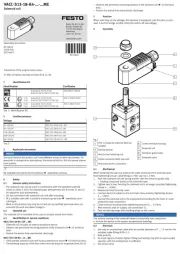
1 Augustus 2025
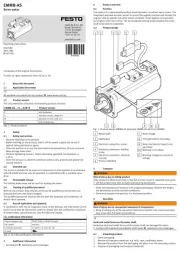
1 Augustus 2025
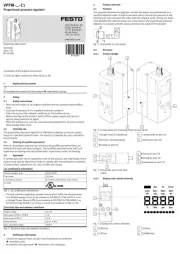
1 Augustus 2025
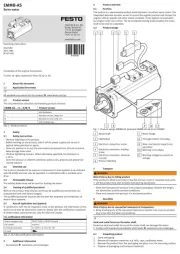
1 Augustus 2025
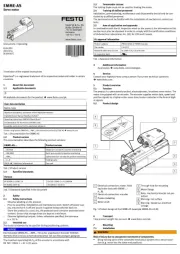
1 Augustus 2025
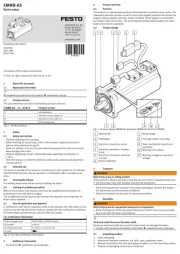
1 Augustus 2025
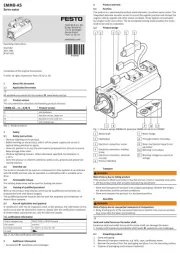
1 Augustus 2025
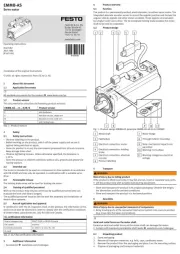
1 Augustus 2025
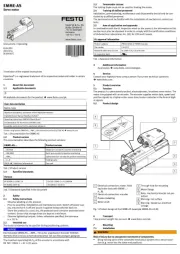
1 Augustus 2025

1 Augustus 2025